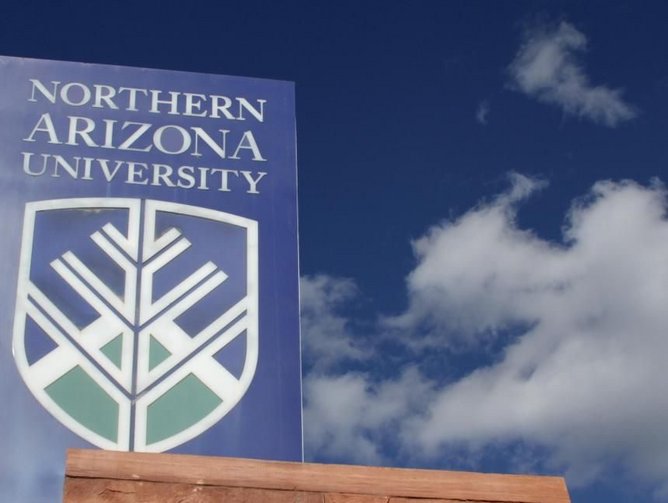Technology is less about platforms than about people: this is the starting point for the team transforming an institution that claims to be not merely a place, but an experience.
With 30,000 students, two thirds of them located on the main campus at Flagstaff and the remainder at 30 campuses around the State of Arizona or studying online, Northern Arizona University’s (NAU) strapline is: 'The world looks different from here'. That could be because Flagstaff – at 7,000 feet and surrounded by mountains – is in such opposition to the hot desert that is often associated with the state, but it probably has more to do with its diversity.
Its student population contains a high proportion of minority undergraduates, but above all this is a student-centered institution that aims to give people top quality educational opportunities irrespective of their status and background – from college-bound high school student, to busy professional, working parent, or anything between. This commitment is recognized by its acceptance as an iPass (Integrated Planning and Advising for Student Success – a program that involves new approaches to advising and degree planning services for college students along with new technologies) grant recipient.
Founded in 1899, the university grew by accretion over the years. When its current President Dr Rita Cheng came on board in 2014, an early priority was to integrate its departments in response to the need for strategic and integrated solutions that support teaching, learning and research in today’s rapidly changing world of technology. As she has pointed out: “In this day and age, in order to stay competitive, it’s important to take advantage of new technology that reflects the vision of our institution.” Accordingly, she set out to appoint a new CIO who shared this vision, and in July 2016 hired Steve Burrell to the post. “President Cheng’s vision is inspiring and the challenge to us is phenomenal, and it is the reason I came to the university,” he says.
Technology only exists to serve people, he believes. His job is more about helping students obtain the skills and experience they need to be successful in their careers, and helping the country and the world to more positive outcomes. “There is a renewed spirit around student success, improving the quality of life for the citizens we serve and their families and helping them meet the challenges we all face.”
The role of CIO has changed a lot from the 1980s when it was very much a back room function. Now the technology has moved out of the computer centers and labs and into the hands of the students, whose devices outstrip the power of the Digitial Equipment Corporation PDP-11/70 computer that he remembers serving an entire college. “Now the CIO is engaged with the business philosophy, strategy and people management of the organization. Technology helps people become better people.”
With this in mind, Burrell set about consolidating IT resources from around the institution. Like most large higher education institutions NAU was very decentralized in terms of its IT and support systems. “We have been working to pull our resources together and create new economies in equipment, software licensing and the like. We have to recognize that young people are bringing new technologies to campus and operate our networks to be more accommodating to that.” His aim is to maintain duality between an open environment that encompasses different devices of all sorts and robust security practices while allowing the freedom to explore ideas. “At the operational level, you are removing barriers and allowing people to explore while building security around those assets and those resources.”
In this effort, he acknowledges the innovative edge that partners like Cisco bring to the table. “Being a Cisco partner, we find they understand that really well, at the same time embracing the insatiable need for bandwidth. NAU is isolated both physically and metaphorically, he points out, so collaboration with other institutions is imperative. The Sun Corridor Network is a collaboration between NAU, Arizona State University (ASU) and the University of Arizona (UA) to share digital communications resources, network services, and applications, and has made a big difference in enabling students and researchers to stay connected with each other and the wider world. Sun Corridor helps NAU's high performance cluster to leverage web based resources like Internet2, MS Azure and Amazon web services to do research or access large data sets for the benefit of faculty and students alike.
This access enables the university to leverage the smart devices that students carry. “We are doing that by deploying new mobile apps that connect to the variety of systems students are using here.” This gives them access to the Blackboard learning management system (LMS), which adds online elements to the classroom experience, and also taps in to the portal information that the university holds about its students. Much of this is accessed through the SalesForce CRM system, which has been rolled out at NAU over the last twelve months.
SalesForce is an important tool to ensure student success, drawing together the information the university holds about a student and using that information to 'nudge' them in the right direction. It is also a student retention tool. If a student is struggling, financially, academically, emotionally or personally, having a 360 degree view of his or her experience will prompt interventions, maybe from a counselor or mentor, way before that student decides to give in and drop out.
There's always a pathway to success, says Burrell; it might involve adjusting a student’s approach to coursework or choosing a different major altogether. It could involve helping students identify other forms of financial aid or scholarships that are available. “Many first-time higher education students don't even know the right questions to ask. We have tied subsystems into SalesForce to give us a holistic view of the student, whether that information is coming from Blackboard, attendance information from faculty, other risk factors from our Civitas analytics which can tell us about courses the student may be finding difficult. In that context, we are fully engaged in leveraging technology in a replicable and sustainable way, monitoring students' needs, their contact points, and other performance indicators so we can make appropriate interventions and nudges.”
As he continues to push SalesForce throughout the organization, Burrell’s team is developing new prescriptive analytics measures with their Civitas partner that will focus on the optimum course path for each student. “Civitas helps us identify the course path that you are likely to be most successful with. Now we have hard numbers, metrics and empirical evidence to guide students to successful outcomes.”
Student success comes in different guises. For example, you can't study aerospace engineering at NAU; nevertheless if that emerges as the student’s preferred major, Civitas will help guide such a student to collect the credits they need to transfer to UA. That transfer would be counted a success.
Analytics are again a core input to a unique off-campus NAU program called Personalized Learning (PL), he adds. “It allows students to consume six months of competency based education in which they consume as much as they can absorb, online. That has been especially good for older students who bring a lot of personal experience, like military people or people looking for a career change, but varied background of formal education.” With around 1,000 students, but growing fast, PL is enhancing lives and opening new horizons. “It is very encouraging to see the success students have in this non-traditional program and reminds me of why I do what I do.”
Another innovation Burrell is enthusiastic about helps students even before they enroll at NAU. Jack's Path allows a community college student who has an interest in transferring to NAU to know exactly how their course can transfer. Selecting courses could be complicated but now students can make an intelligible choice with a view of all implications. “We have tremendous feedback from students and our community college partners alike – it minimizes a lot of the data entry and takes away the guesswork for advisors and the student.”
We continue to enhance our business processes and procedures to improve our efficiency and effectiveness,” he concludes. “For example, we're consolidating many document management systems to Hyland OnBase, one of our major technology partners. This is one of the areas I saw where we had a lot of duplicated efforts and uncoordinated business processes. We’re engaging our business stakeholders in process mapping and then applying OnBase. We can automate and simplify student processes and make it accessible on their personal devices. We’re making dozens of process improvements each month.”
As Burrell said at the outset, it is ultimately about people not technology – a concept he is encouraging among the IT team itself. “Our technology philosophy is about people, and developing soft skills in addition to our technical core. For example, cloud computing removes the burden of mundane IT maintenance, and allows IT staff to innovate through communication and problem solving skills that benefit our students.”
NAU’s shift from computation to creativity is a new role for many IT organizations. Indeed, the world does look different from here.





